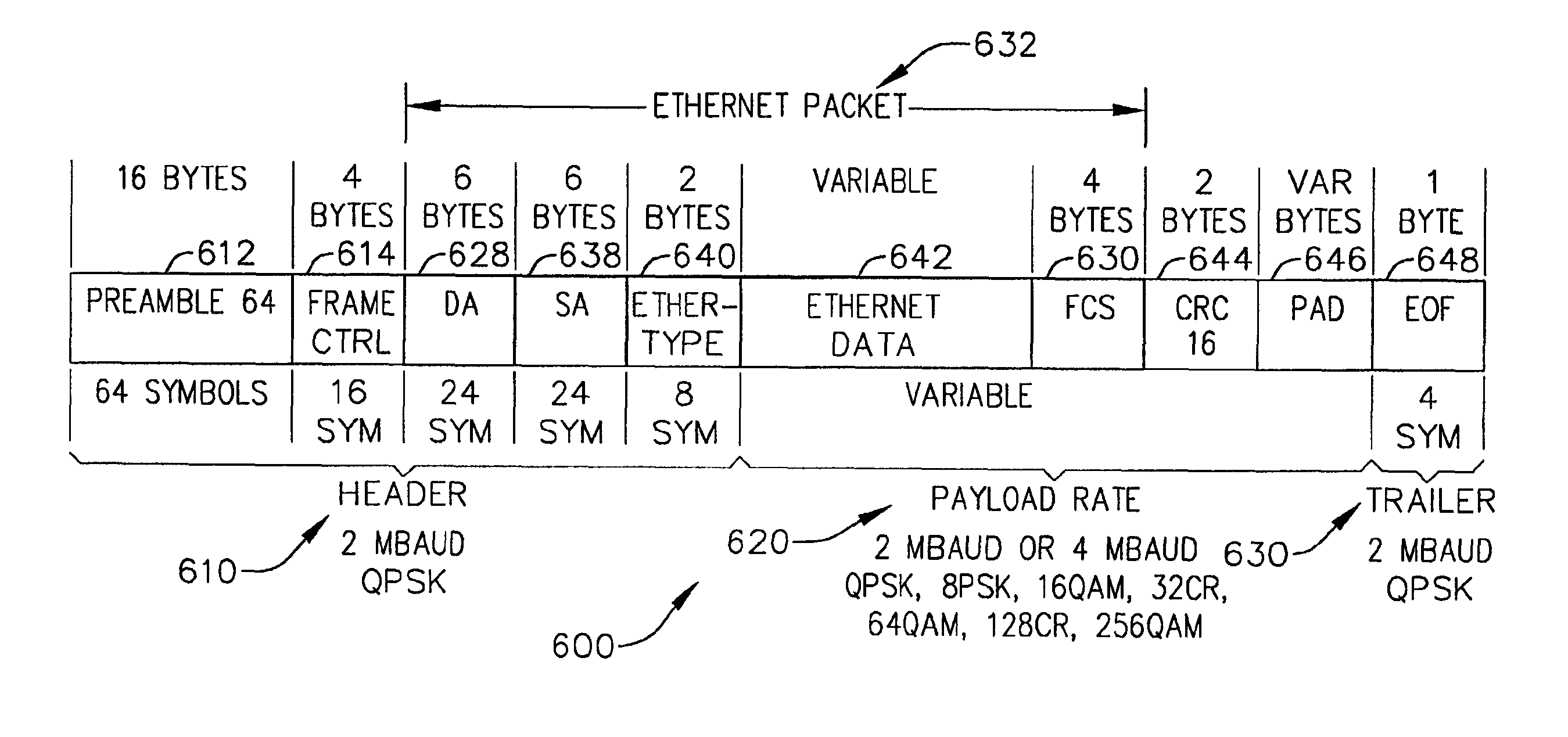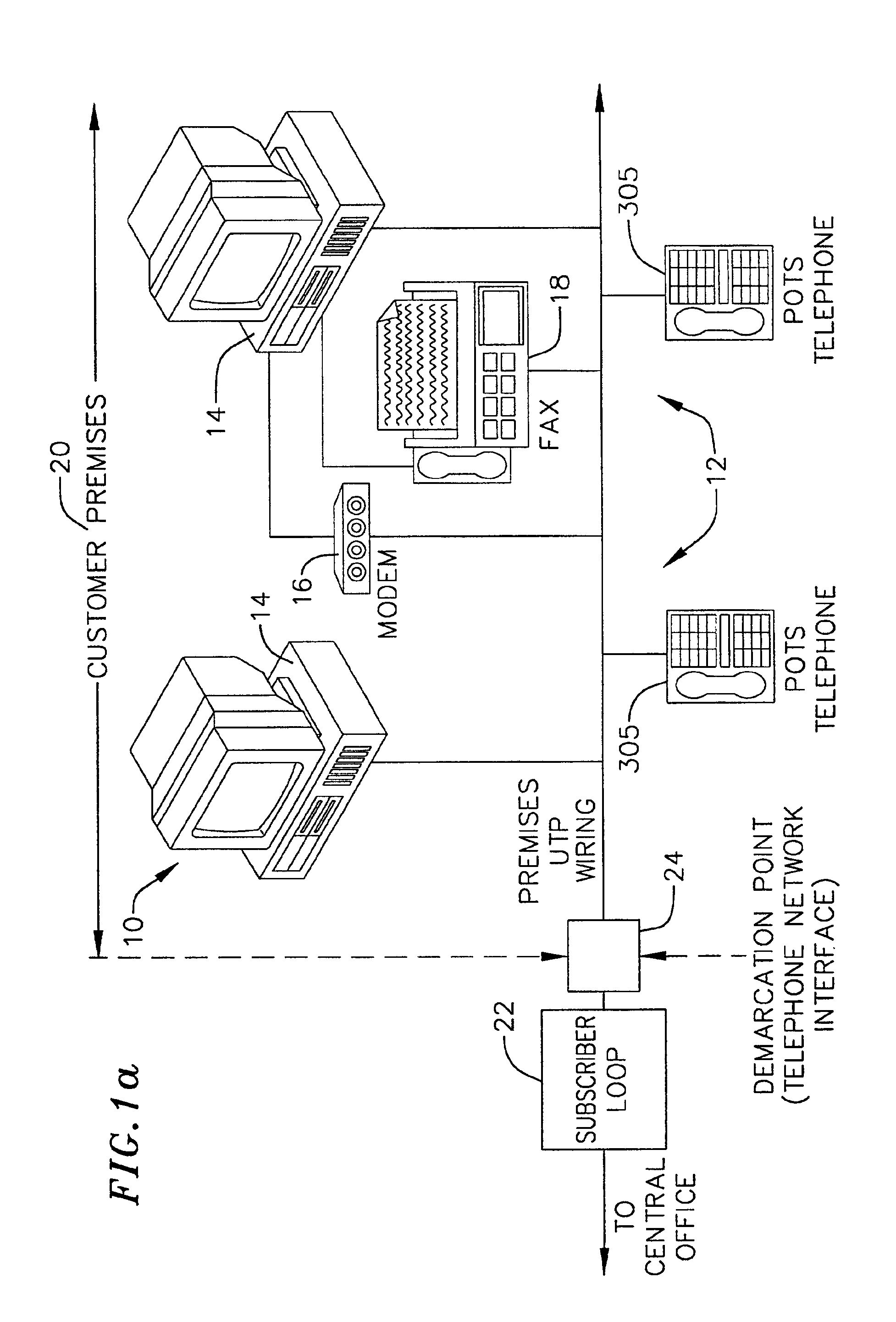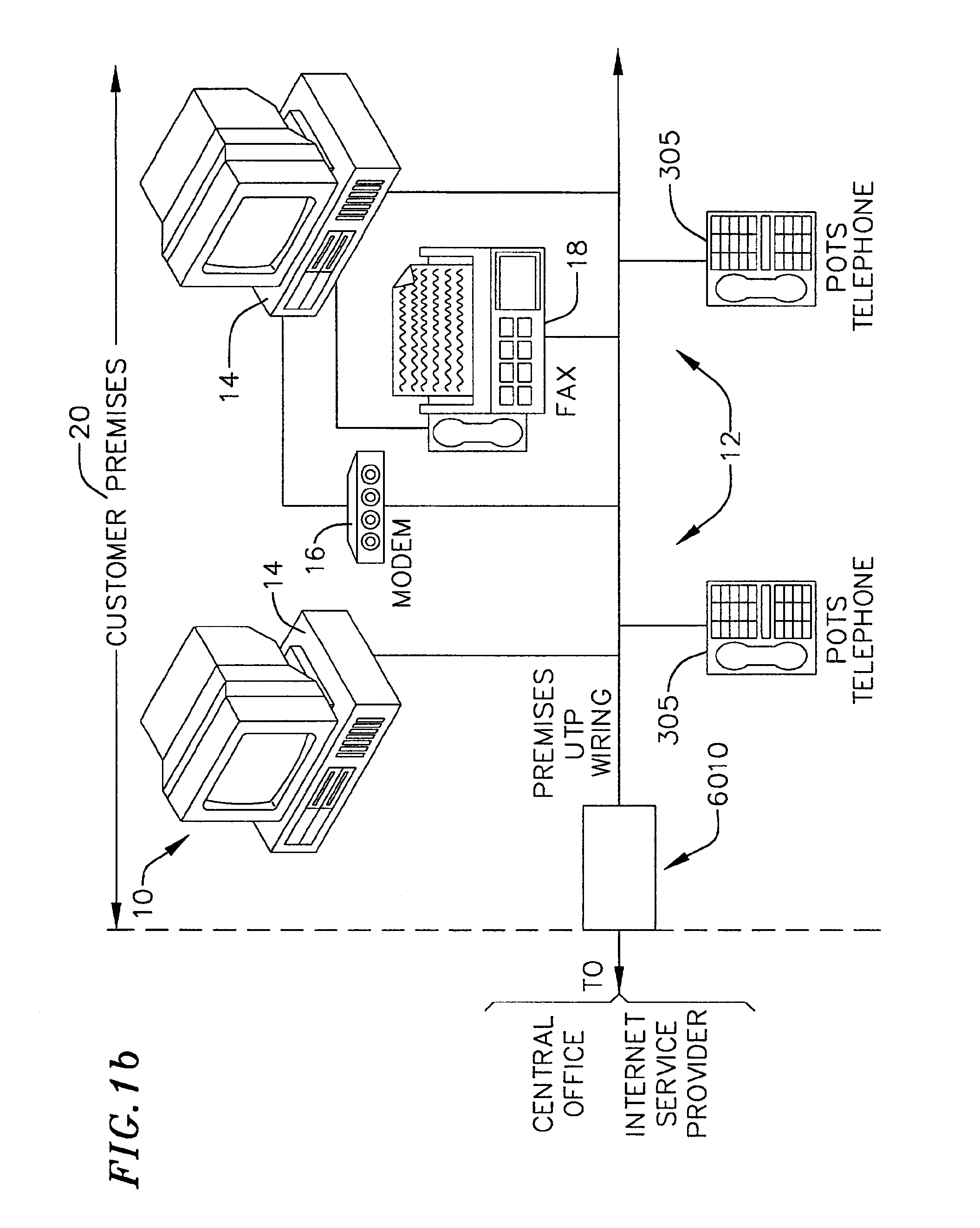Method for selecting an operating mode for a frame-based communications network
a communication network and operating mode technology, applied in the field of communication, can solve the problem that the first type station is not capable of reliably detecting the second protocol fram
- Summary
- Abstract
- Description
- Claims
- Application Information
AI Technical Summary
Benefits of technology
Problems solved by technology
Method used
Image
Examples
Embodiment Construction
[0102]Before addressing the Voice aspects of the present invention, the Homenetworking implementation aspects will be first addressed.
Homenetworking Implementation Aspects
[0103]A communications network typically includes a group of nodes interconnected by a transmission medium. The term “node” relates to any device that shares frames of data with other nodes in the network. Devices that may make up a node are computers, printers, scanners, etc. A node may also be a telephone, a television, a set-top box for televisions, a camera or other electronic sensing or communication device. Any device that can send and / or receive frames of data with other devices via a communication medium may be a node for purposes of the present invention.
[0104]The transmission medium that links each node in a network is equally one of a diverse family of media. Common media used include unshielded twisted pair (e.g. phone wire, CAT-5 cabling), power lines, optical fiber, coaxial cable and wireless transmis...
PUM
 Login to View More
Login to View More Abstract
Description
Claims
Application Information
 Login to View More
Login to View More - R&D
- Intellectual Property
- Life Sciences
- Materials
- Tech Scout
- Unparalleled Data Quality
- Higher Quality Content
- 60% Fewer Hallucinations
Browse by: Latest US Patents, China's latest patents, Technical Efficacy Thesaurus, Application Domain, Technology Topic, Popular Technical Reports.
© 2025 PatSnap. All rights reserved.Legal|Privacy policy|Modern Slavery Act Transparency Statement|Sitemap|About US| Contact US: help@patsnap.com



